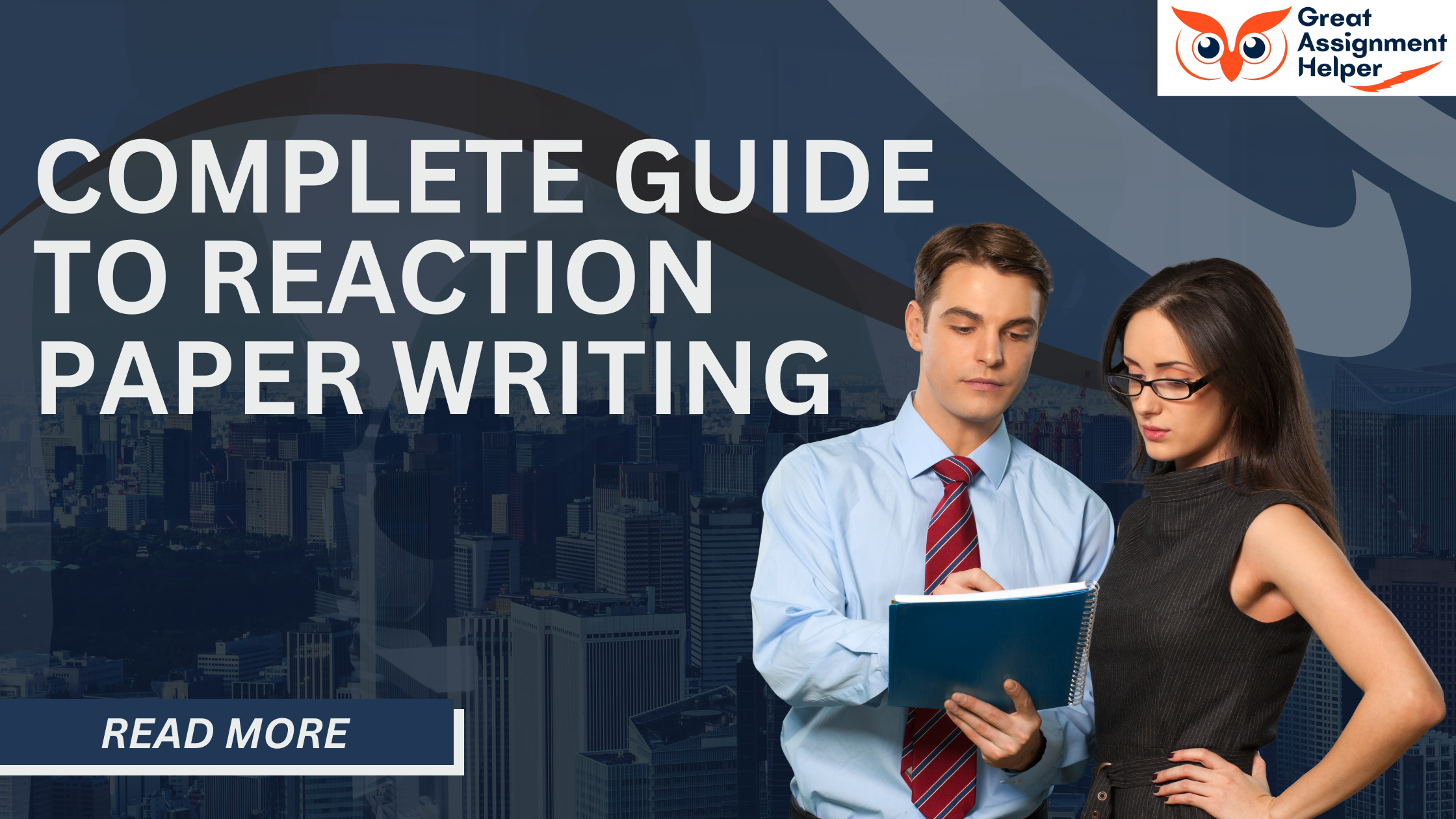
A reaction paper is a type of academic writing where the writer evaluates and analyzes a specific text, movie, article, or event and expresses their personal thoughts and opinions on it.
It combines both critical thinking and personal reflection, unlike a summary that just recounts what happened. In a reaction paper, you are not only sharing what you understood but also how it affected you.
Reaction papers are used frequently in schools and colleges to assess how well students can digest and react to the material. The main goal is to show your personal understanding of the subject, backed by logical reasoning and specific examples.
Listen To This Blog
Purpose and Importance of a Reaction Paper
A reaction paper serves multiple purposes in both academic and professional settings. It develops essential skills such as critical thinking, effective communication, and the ability to articulate personal opinions.
The ability to reflect on what you’ve learned and present it in a structured, well-supported paper shows a high level of engagement with the subject matter.
In academic contexts, reaction papers are tools for students to:
Demonstrate comprehension Connect theoretical ideas to real-life experiences Critically assess different viewpoints Reflect on their learning journey.
Reaction papers are also useful outside of school. For professionals, especially in psychology, literature, media studies, and education, reaction papers can be a valuable method for personal and team development, and for documenting reflections during training sessions, workshops, and professional development courses.
How to Write a Reaction Paper
A well-written reaction paper contains three major components:
Introduction:
- A brief summary of the work you're reacting to
- Title and author of the original work
- A clear thesis statement summarizing your main reaction
Body Paragraphs:
- Each paragraph should focus on one specific idea or reaction
- Use evidence and examples from the work to support your opinions
- Discuss the effectiveness of the author's arguments, presentation, or themes
Conclusion:
- Restate your main points
- Reflect on the overall significance of the work
- Share any final thoughts or recommendations
Steps to Write an Effective Reaction Paper
Step 1: Read or Watch the Material Carefully Give the source material your full attention. Take notes, highlight key points, and identify emotional responses as they arise.
Step 2: Identify Key Elements What are the central themes? What stood out to you? What did you agree or disagree with?
Step 3: Develop a Thesis Statement This is the heart of your paper. A strong thesis reflects your overall reaction in a single sentence.
Step 4: Draft the Paper Begin with an engaging introduction. Each body paragraph should explore a specific reaction or idea. Conclude with a reflective ending.
Step 5: Revise and Edit Proofread your work. Make sure ideas flow logically, and correct any grammatical errors.
How to Start a Reaction Paper
Crafting a Strong Introduction The introduction sets the tone of your paper. Start with something that captures the reader’s interest, such as a thought-provoking question, a relevant quote, or a compelling statistic.
Mention the title, author, and a brief summary of the material. End the introduction with a clear thesis statement expressing your main reaction.
Tips for Engaging Opening Lines
- "What if everything you believed about social media was a lie?"
- "In the documentary 'The Social Dilemma,' I discovered how digital platforms manipulate behavior."
- "After watching 'Dead Poets Society,' I felt a powerful urge to reclaim my passion for learning."
Reaction Paper Format
Structure Overview
The typical reaction paper format follows a three-part structure:
- Introduction – Identify the material, provide a summary, and present your thesis.
- Body Paragraphs – Analyze the material and present your reactions with evidence.
- Conclusion – Summarize your insights and share final thoughts.
Style and Formatting Guidelines
- Use first-person point of view (I, me, my)
- Maintain a formal academic tone
- Stick to one-inch margins, double-spacing, and 12-point font
- Cite sources using APA, MLA, or Chicago style, depending on your instructor’s requirements
Example of a Reaction Paper with Introduction, Body, and Conclusion
Title: Reaction to "The Social Dilemma" Documentary
Introduction: Social media plays a massive role in our everyday lives. After watching "The Social Dilemma," a Netflix documentary that explores the negative impact of tech giants on society, I was shocked and disturbed. The documentary revealed hidden truths about how social media algorithms are designed to manipulate behavior. My main reaction was one of concern and a newfound awareness of my digital habits.
Body Paragraphs: The most powerful part of the documentary was the interviews with former tech executives who admitted that these platforms were built to exploit human psychology. One interviewee mentioned how algorithms determine what we see, encouraging addiction and misinformation. This deeply troubled me, as I recognized similar patterns in my own online behavior. I also appreciated the segment on mental health and how social media contributes to anxiety, especially among teens. This made me reflect on the importance of digital well-being.
Conclusion: "The Social Dilemma" served as a wake-up call. It not only educated me about the inner workings of social media but also made me more mindful of my screen time. The documentary’s strong arguments and real-life examples left a lasting impression and inspired me to adopt healthier digital habits.
Reaction Paper Example (Short Sample)
Title: Reaction to Shakespeare's "Macbeth"
William Shakespeare’s "Macbeth" is a dark tale about ambition, power, and guilt. I found the play emotionally gripping, especially Lady Macbeth’s transformation from a ruthless instigator to a guilt-ridden woman. The use of supernatural elements added suspense, while the themes remain relevant even today. My reaction was one of intrigue and reflection on how unchecked ambition can lead to personal destruction.
Reaction Paper Sample (Detailed Academic Style)
Title: Response to the Article "Climate Change and Human Behavior"
The article "Climate Change and Human Behavior" by Dr. Elaine Smith examines why people are resistant to accepting climate change science. The author uses psychological studies to explain cognitive dissonance, confirmation bias, and denial.
I was particularly impressed by the way the article linked environmental inaction to behavioral science. My reaction was both analytical and emotional. I realized how often I had ignored scientific evidence simply because it made me uncomfortable.
The article challenged me to reconsider my lifestyle choices and motivated me to seek more sustainable habits. I also appreciated the balanced tone and academic integrity of the article. The inclusion of real-life case studies and empirical data made the arguments even more convincing.
It was a reminder that solving global issues like climate change requires not only policy changes but also a shift in human behavior.
Final Tips for Writing a Reaction Paper
Writing a good reaction paper is not about simply agreeing or disagreeing with the content. It’s about engaging critically with it. Here are some final tips: Be Honest: Your reaction should reflect your genuine thoughts.
Use Examples: Support your opinions with specific references to the material. Stay Organized: Use clear topic sentences and logical transitions. Avoid Summarizing Too Much: The focus should be on your reaction, not a detailed summary. Follow Instructions: If you’re writing for a class, adhere to the guidelines provided.
FAQs on Reaction Paper Writing
Q: Can I use first-person in a reaction paper?
A: Yes, reaction papers typically use first-person to reflect your thoughts and opinions.
Q: How long should a reaction paper be?
A: It usually ranges from 500 to 1000 words, but it can be longer for more in-depth analysis.
Q: Do I need to include a summary of the material?
A: A brief summary is important for context, but the main focus should be your reaction.
Q: What tone should I use?
A: Use a formal yet personal tone—be respectful, thoughtful, and articulate.
Q: Can I disagree with the content?
A: Absolutely. A well-supported disagreement makes for a strong reaction paper.
Also Read: Calculating slope and gradient in math.

